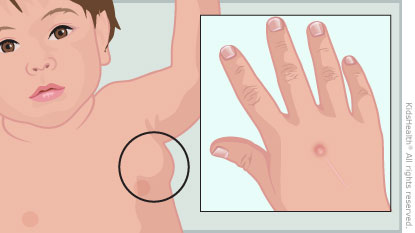Kids can get cat scratch disease when a kitten or cat that is infected with the bacteria Bartonella henselae (a type of germ) bites or licks them. Symptoms usually include a small bump on the skin and swollen lymph nodes. Children also may have a fever, tiredness, sore throat, headache, loss of appetite, and rarely, more serious problems. Cat scratch disease is usually treated with antibiotics. Use these instructions to care for your child.


Follow the package directions exactly for how much to give and how often.

Your child:

Your child:

Is cat scratch disease contagious? The disease doesn't pass from person to person. Sometimes more than one person in the family gets it, usually by touching the same infected animal. Usually, people who get cat scratch disease won’t get it again. If you think your child was infected by your family cat or kitten, talk to your vet about getting treatment for the pet.
What problems can happen from cat scratch disease? In most kids, cat scratch disease is a mild illness. The swollen lymph nodes may last for a few months, but over time they go back to normal. Rarely, more serious problems can happen. For example, a swollen lymph node may not go away and a surgeon may need to drain it or remove it. Or some kids may develop problems with their liver, eyes, or brain.
What can help prevent cat scratch disease? To prevent cat scratch disease, teach kids to avoid stray or unfamiliar cats and kittens. If you have a cat or kitten at home, kids should:
Also, keep your house and pets free of fleas (fleas spread the cat scratch bacteria germ between cats).